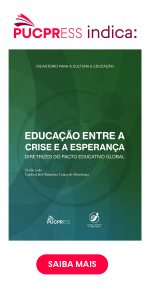The two proposals of pentecostal hermeneutics in dialogue: the post-modern and the historical-grammatical one
DOI:
https://doi.org/10.7213/2175-1838.17.001.DS05Abstract
The article examines two strands of contemporary Pentecostal hermeneutics: the first, the most recent proposal, classified as postmodern and called the 'aesthetics of textual reception', which emphasises the personal experience of the believer as an integral, important and predominant part of the process of interpreting Scripture; the second, the more traditional view of biblical interpretation based on grammatical interpretation, called the 'historical-grammatical method'. Postmodern hermeneutics attack traditional historical-grammatical hermeneutics as an attempt to Calvinise Pentecostalism, while grammatical hermeneutics emphasise the need to maintain a degree of control in the interpretation of the Bible, appealing to the traditional way in which the Bible has been read over the centuries. Methodologically, a critical-comparative approach has been developed between traditional Pentecostal hermeneutics with a historical-grammatical basis and postmodern Pentecostal hermeneutics based on the aesthetics of the reception of the text, using content analysis and a systematic bibliographical review to examine historical-grammatical and aesthetic hermeneutics of reception in the Pentecostal context, and a historical-descriptive perspective to contextualise the development of these hermeneutics within Pentecostalism. The research also engages with hermeneutic phenomenology, evaluating the role of experience in biblical interpretation, especially in the postmodern model. The analysis focuses on the theoretical foundations, interpretive methods and practical implications of each approach, highlighting their contributions and limitations for Pentecostal theology and practice. The main findings can be summarised in three points: First, postmodern hermeneutics based on the "aesthetics of textual reception" is still seeking acceptance in the Pentecostal milieu, where it has been severely criticised for somehow equating or even placing the personal experience of the believer above Scripture and Church teaching; secondly, traditional hermeneutics, based on grammaticality, has in its favour the fact that it is the historical interpretation of the church and, moreover, the one that has provided the doctrinal basis not only of Pentecostalism but of the Christian church itself; thirdly: Pentecostal hermeneutics went through a pre-critical phase, represented by the first exponents, such as. thirdly: Pentecostal hermeneutics went through a pre-critical phase, represented by the first exponents, such as Seymour and Bartleman; a second phase (as indicated by Archer: 'the hermeneutics of the first Pentecostals'), in which there was a technical concern with hermeneutics, in which the 'historical-grammatical' method of interpretation was adopted; and a third phase, in which there is a strong postmodern proposal for hermeneutics based on the 'aesthetics of the reception of the text'. The debate is still open and is likely to continue for years to come.
Downloads
Metrics
Downloads
Published
How to Cite
Issue
Section
License
O(s) autor(es) transfere(m), por meio de cessão, à EDITORA UNIVERSITÁRIA CHAMPAGNAT, pessoa jurídica de direito privado, inscrita no CNPJ/MF sob o n.º 76.659.820/0009-09, estabelecida na Rua Imaculada Conceição, n.º 1155, Prado Velho, CEP 80.215-901, na cidade de Curitiba/PR, os direitos abaixo especificados e se compromete a cumprir o que segue:
- Os autores afirmam que a obra/material é de sua autoria e assumem integral responsabilidade diante de terceiros, quer de natureza moral ou patrimonial, em razão de seu conteúdo, declarando, desde já, que a obra/material a ser entregue é original e não infringe quaisquer direitos de propriedade intelectual de terceiros.
- Os autores concordam em ceder de forma plena, total e definitiva os direitos patrimoniais da obra/material à EDITORA UNIVERSITÁRIA CHAMPAGNAT, a título gratuito e em caráter de exclusividade.
- A CESSIONÁRIA empregará a obra/material da forma como melhor lhe convier, de forma impressa e/ou on line, inclusive no site do periódico da EDITORA UNIVERSITÁRIA CHAMPAGNAT, podendo utilizar, fruir e dispor do mesmo, no todo ou em parte, para:
- Autorizar sua utilização por terceiros, como parte integrante de outras obras.
- Editar, gravar e imprimir, quantas vezes forem necessárias.
- Reproduzir em quantidades que julgar necessária, de forma tangível e intangível.
- Adaptar, modificar, condensar, resumir, reduzir, compilar, ampliar, alterar, mixar com outros conteúdos, incluir imagens, gráficos, objetos digitais, infográficos e hyperlinks, ilustrar, diagramar, fracionar, atualizar e realizar quaisquer outras transformações, sendo necessária a participação ou autorização expressa dos autores.
- Traduzir para qualquer idioma.
- Incluir em fonograma ou produção audiovisual.
- Distribuir.
- Distribuir mediante cabo, fibra ótica, satélite, ondas ou qualquer outro sistema que permite ao usuário realizar a seleção da obra ou produção para recebê-la em tempo e lugar previamente determinados por quem formula a demanda e nos casos em que o acesso às obras ou produções se faça por qualquer sistema que importe em pagamento pelo usuário.
- Incluir e armazenar em banco de dados, físico, digital ou virtual, inclusive nuvem.
- Comunicar direta e/ou indiretamente ao público.
- Incluir em base de dados, arquivar em formato impresso, armazenar em computador, inclusive em sistema de nuvem, microfilmar e as demais formas de arquivamento do gênero;
- Comercializar, divulgar, veicular, publicar etc.
- Quaisquer outras modalidades de utilização existentes ou que venham a ser inventadas.
- Os autores concordam em conceder a cessão dos direitos da primeira publicação (ineditismo) à revista, licenciada sob a CREATIVE COMMONS ATTRIBUTION LICENSE, que permite o compartilhamento do trabalho com reconhecimento da autoria.
- Os autores autorizam a reprodução e a citação de seu trabalho em repositórios institucionais, página pessoal, trabalhos científicos, dentre outros, desde que a fonte seja citada.
- A presente cessão é válida para todo o território nacional e para o exterior.
- Este termo entra em vigor na data de sua assinatura e é firmado pelas partes em caráter irrevogável e irretratável, obrigando definitivamente as partes e seus sucessores a qualquer título.
- O não aceite do artigo, pela EDITORA UNIVERSITÁRIA CHAMPAGNAT, tornará automaticamente sem efeito a presente declaração.




